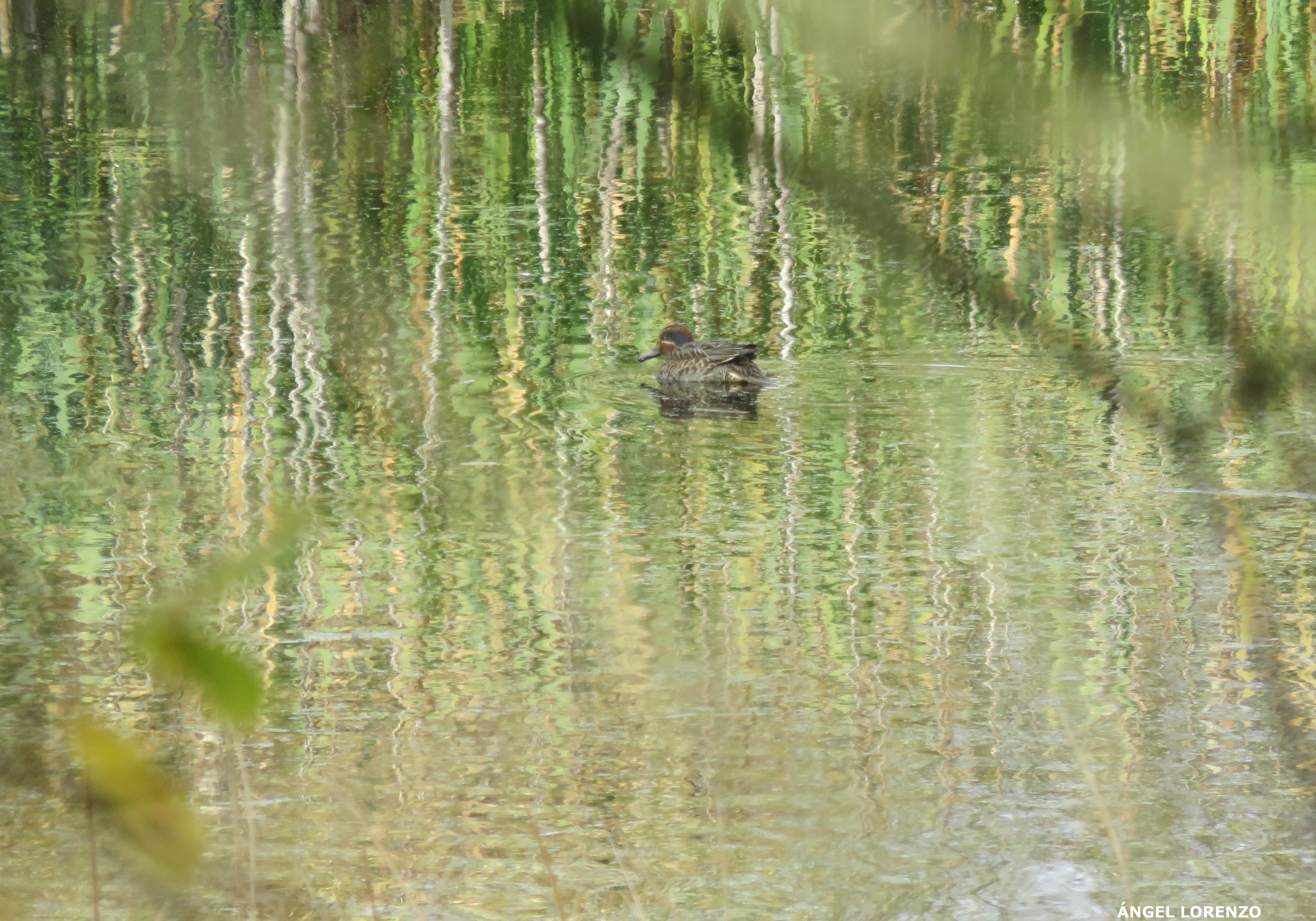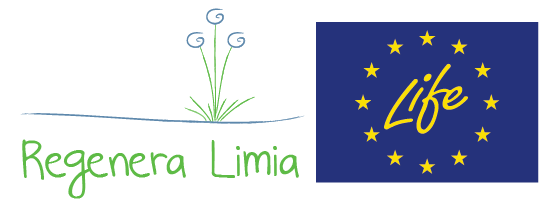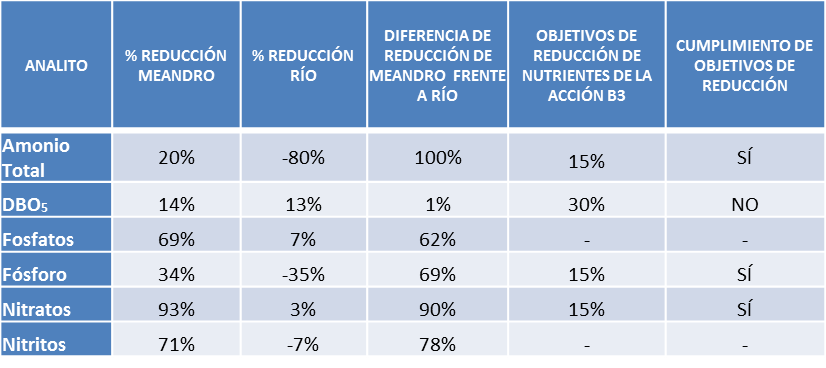
23 May B3. LIMIA REHABILITATION
In the Life Regenera Limia Project, Action B3 “Recovery and rehabilitation of old flood plains of the Limia” is framed. In this Action the following actions are contemplated with the objective of the fluvial ecosystem itself collaborating in the reduction of nutrients in the water and improving its quality:
- Hydraulic and hydrological connection with the current Limia river with its old meander of approximately 1 km.
- Permeabilization of the flow of the water with its flood plains, creating naturalized slopes that allow the fluctuation of the water the meander and its
- Improving the structure of riparian vegetation and riparian forest.
RESULTS PREVIEW:
- Evolution of water quality, Physical-chemical parameters
The results obtained during the 2019 monitoring campaign concerning the monitoring of water quality confirm the reduction in the concentration of nutrients in the water after circulating through the meander, compared to the same route in the river, with average reduction percentages higher than 60% in nitrogen and phosphorus compounds. Highlighting the percentage of reduction of nitrates and nitrites in all the samples over 40%.
On the one hand, the 90% reduction of nitrates in water should be highlighted, and on the other hand, ammonium is in a more favourable situation compared to the same period in 2018 due to the current anoxic conditions presented by water in the meander..
- Evolution of Water Quality, Biological Parameters
The operation of the meander as a fluvial habitat, we can see that there is a clear colonization of native species of macroinvertevados in the river. In addition, thanks to the indicator of diatoms, it can be said that the communities of macrophytes (plants that live in the water) have increased their presence since they have a greater depurative activity and therefore a reduction of nutrients in the water that circulates through the meander.
- Evolution of habitats and species
Flora:
Once the connection works with the Limia river were completed, propagules were planted to achieve the prompt revegetation of the margins of the new created margin and an adjacent floodplain or platform. Common species were planted in the immediate surroundings (Apium nodiflorum, Glyceria declinata, Schoenoplectus lacustris, Typha latifolia, Juncus bulbosus, Lythrum salicaria, Lycopus europaeus, Mentha suaveolens), as well as some small willows (Salix spp) used to contain erosion on the slopes. Vegetation evolves favourably.
Herpetofauna:
A network of seasonal ponds was generated in the floodplain and have interconnected with each other, through the pruning of part of the arboreal vegetation annexed to the ponds increased insolation which promotes the colonization and development of heliophilic amphibian species such as Hyla arborea and Pelophylax perezi.
Avifauna:
The evolution of the restored riverbed and its floodplain has led to the creation of a potential habitat for the breeding of the common teal (Anas crecca), a fact of great relevance as the nesting population of this species is included in the Galician Catalogue of Threatened Species in the category of “Endangered” and in the region of A Limia is included in the category of species with “Breeding possible”.



